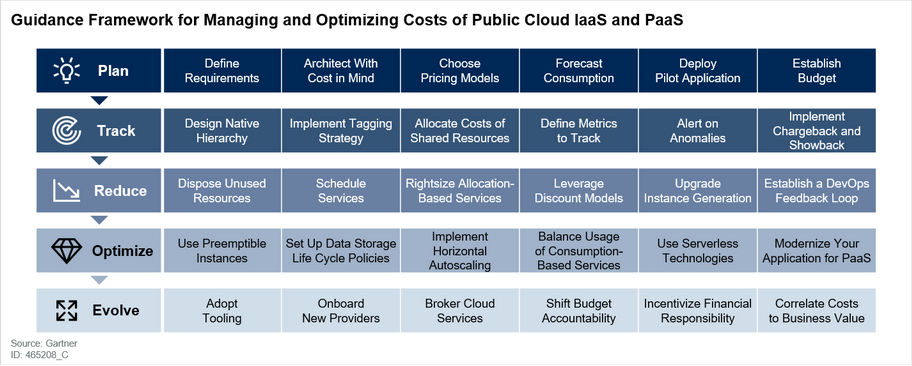An efficient cloud cost management strategy is an essential component for companies who want to maximize the value of their cloud expenditures. Businesses are able to derive the most value possible from their cloud services if they investigate and put into action a variety of different tactics. These tactics not only help in minimizing the overall expenses associated with cloud computing, but they also help in optimizing cloud utilization, which ensures that organizations completely benefit on the investments they have made.
The economic challenges and the need for cost management
Businesses are looking for ways to improve their resiliency and efficiency as the economic environment grows increasingly difficult. The price of cloud-based software is one aspect that is frequently subjected to investigation. Many companies have reported that their cloud computing expenses have increased by between 20 and 30 percenton an annual basis. This is despite the fact that the cloud, when properly managed, can provide significant value. As a response to these economic challenges, it is essential to create solutions that can lower the costs of cloud program implementation by as much as 15 to 25 percent, without affecting the capabilities of the program to generate value.
The role of CIOs in cloud cost management
As the stewards of technology within their organizations, CIOs play a pivotal role in managing and optimizing cloud spending. As cloud expenditure continues to grow, it becomes increasingly crucial for CIOs to effectively manage these costs to maximize their return on investment and fully harness the benefits of the cloud.
Unchecked cloud costs can quickly escalate, eating into budgets and diverting resources away from other critical areas. CIOs can ensure that their organizations are only paying for the services they need and are using them efficiently. This not only leads to cost savings but also promotes a more agile and responsive IT infrastructure that can better support the organization's strategic objectives.
Strategies to maximize cloud savings
The following are five ways that can assist organizations in maximizing their savings by taking advantage of price variations among cloud providers:
- Identify unhealthy growth and take steps to eliminate it: The rise in costs associated with cloud computing may be a sign of healthy growth, such as a rising user base or the creation of new digital capabilities. On the other hand, they have the potential to conceal "unhealthy" growth that is the result of poor stewardship, such as the practice of over-provisioning resources or engaging in immature consuming patterns. Establishing a consistent, high-quality, and complete tagging and reporting capacity, as well as introducing financial controls that promote accountability, are two things that companies should do in order to guarantee the transparency of their cloud spending.
- Implement simple fixes: Taking relatively basic actions can result in the capture of a significant number of cost- and performance-optimization possibilities. Among these are the release of unneeded capacity, the introduction of scheduling and auto-scaling features, and the alignment of service levels to the specific requirements of individual applications. Focus on the activities that will provide the greatest possible advantage and move quickly to implement them across all teams and cloud users.
- Access the opportunities of cloud elasticity: Cloud elasticity should reduce expenses for organizations by enabling them to pay only for what they really use of the cloud's resources. However, many businesses adhere to policies and procedures that restrict them from making good use of the elasticity offered by the cloud. These policies and procedures include rigid provisioning methods and an excessive reliance on reserved instances. It is important for businesses to collaborate with their technical teams in order to locate inelastic applications and rework them, beginning with the applications that have the largest footprint.
- Revisit vendor agreements: Numerous companies grossly exaggerate the rate at which they anticipate moving their operations to the cloud, which leads them to make financial commitments that are difficult to keep when the economy is weak. When examining their agreements with their vendors, businesses should consider renegotiating if they are in a position where they would not sign the same deal today.
- Continue to migrate to the cloud but do it in a strategic manner: The idea that businesses may save their expenses by operating within their on-premises settings and reducing the pace at which they migrate data to the cloud is a widespread fallacy. Migrations to the cloud that are well planned and carefully targeted, on the other hand, not only help to cut expenses but also position a company to expand more rapidly after the current economic slowdown has passed. Migration of workloads to the cloud should be prioritized inside organizations, with a focus on those that produce value.

Source: Gartner
Experience the power of cloud cost management with Kubeark
As we explored above, there are numerous strategies that businesses can employ to maximize their cloud investments and leverage cost differences among cloud providers. However, navigating this complex terrain requires expertise, insight, and the right tools.
That's where Kubeark comes in. As a leading platform for software operations management, we are uniquely positioned to help businesses optimize their cloud spending and harness the full potential of their cloud investments. With our suite of tools and services, businesses can gain greater control over their cloud expenditures, ensure efficient resource utilization, and ultimately drive greater value from their cloud investments.
So, don't wait. Start your journey towards efficient cloud cost management today. Remember, in the world of cloud computing, every penny saved is a penny earned. Make your cloud investments work harder for you with Kubeark.
Book your private tour of the Kubeark platform to learn more about how we can help you leverage cloud provider cost differences for maximum savings.

